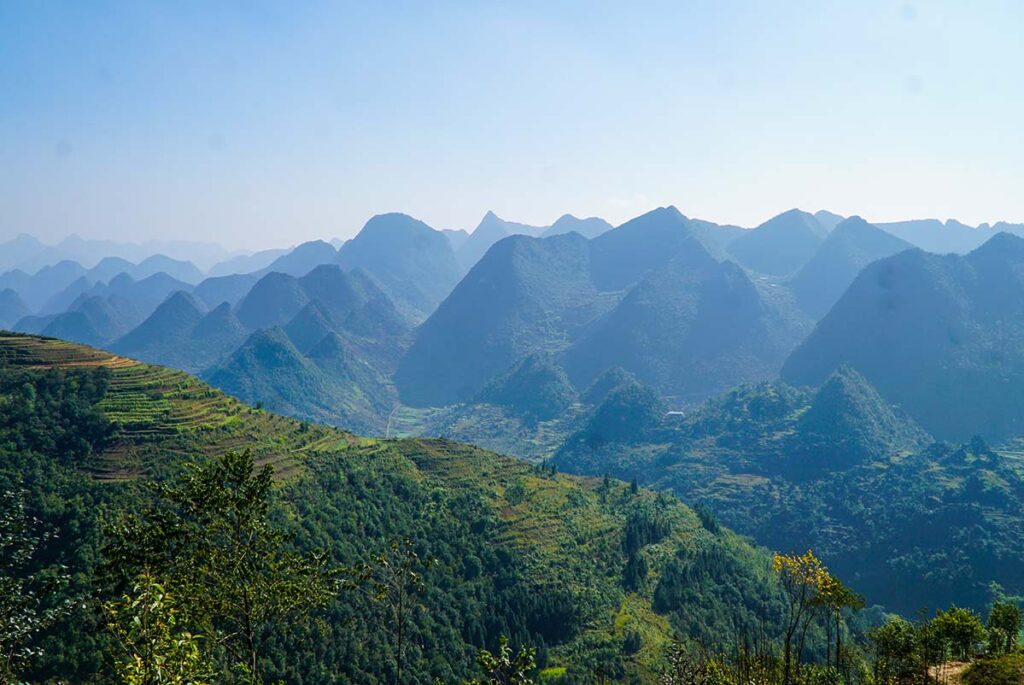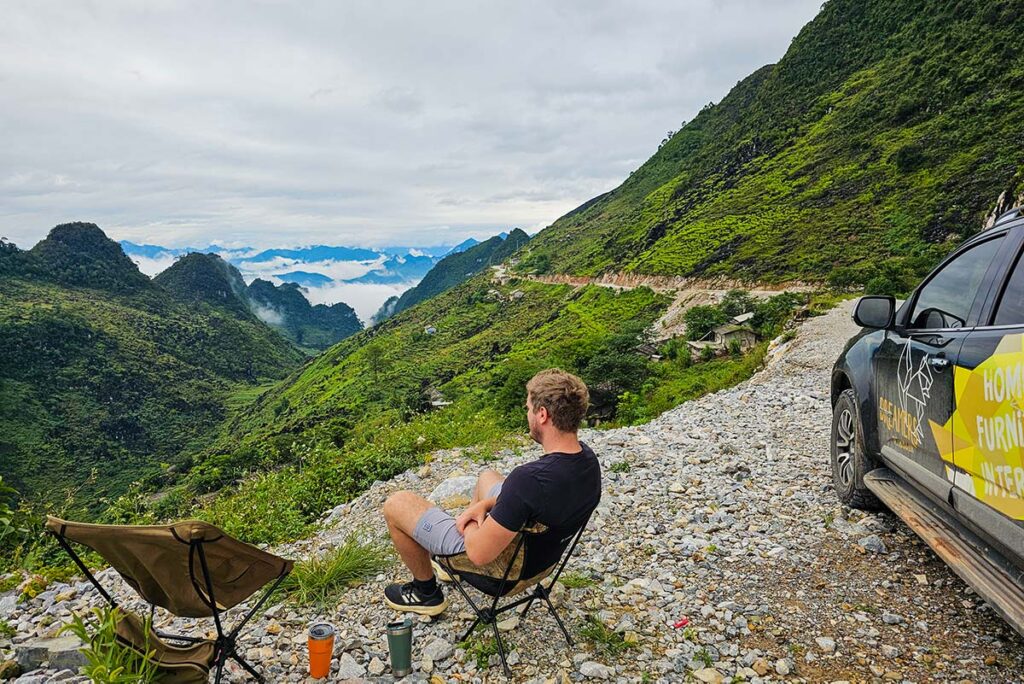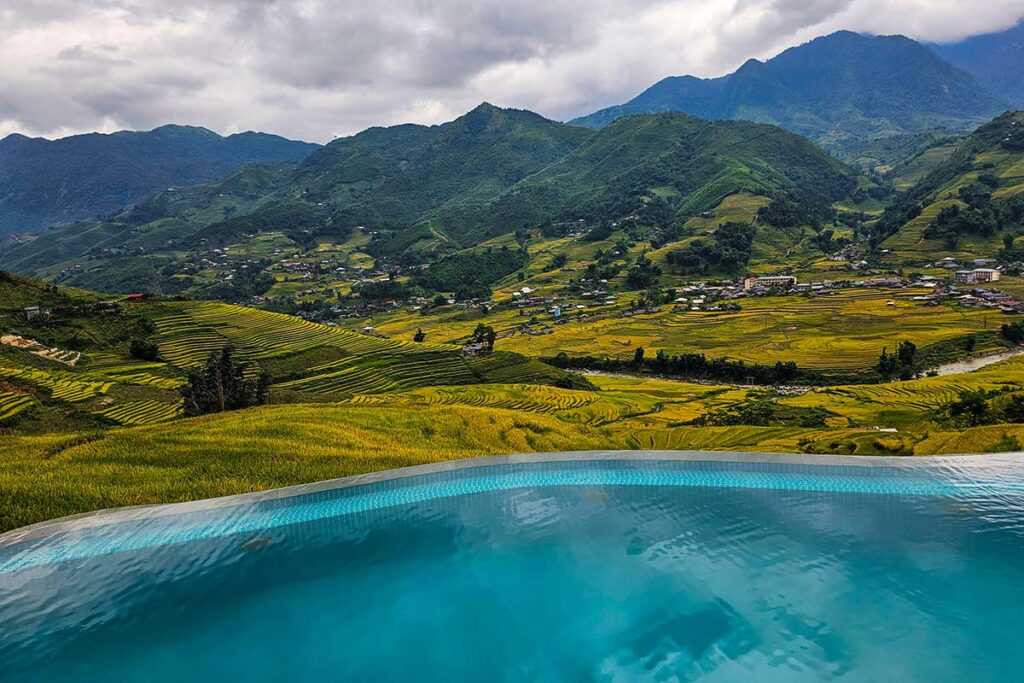Ha Giang vs Sapa: A quick overview
Ha Giang Has Better…
- More stunning mountain scenery: Ha Giang’s landscapes are raw, untamed, and provide a more off-the-beaten-path vibe.
- More places to visit: The Ha Giang Loop alone offers numerous stops and sights, each unique in its own right.
- More authentic: Less touched by mass tourism, Ha Giang retains a genuine local culture.
- Bigger adventure: Navigating the twists and turns of its rugged terrains can be both thrilling and rewarding.
What is Less in Ha Giang
- Driving: The best way to experience Ha Giang is by driving the loop. The journey through magnificent landscapes by motorbike or car is exhilarating, but consecutive days of driving can be exhausting.
- Distance from Hanoi: Reaching Ha Giang from Hanoi requires a longer journey.
- Accommodations: They might not be as plush or numerous as in other touristy areas, but this scarcity also amplifies the region’s authentic feel.
Sapa Has Better…
- More accessible: Proximity to Hanoi and varied transport options like trains and buses make reaching Sapa easier.
- More activities: A plethora of options like trekking, taking the cable car, and driving explorations are available.
- Diverse accommodation range: Whether you’re on a tight budget or seeking luxury, Sapa has it all.
- Developed tourism: With this comes better facilities, more organized tours, and more amenities.
What is Less in Sapa
- Lost authenticity in Sapa town: The town has become quite commercialized, though nearby villages retain their charm.
- Seasonal beauty: While Sapa is breathtaking throughout the year, the mesmerizing rice terraces are seasonal. Outside the cultivation periods, the fields might not be as vibrant.
Combing Sapa and Ha Giang
Before diving into the specifics of the Sapa vs Ha Giang debate, it’s worth considering that you can seamlessly merge the best of both worlds. Direct buses operate between Sapa and Ha Giang, making the journey in roughly 6 hours.
Start your adventure with a 2-day trekking in Sapa, hiking through its iconic terraced rice fields. After that, hop on a bus to Ha Giang where the mesmerizing loop awaits. Over 3 days (or more, if time permits), you can immerse in Ha Giang’s unparalleled landscapes. In essence, in a span of just 6 days, or even longer if you prefer, you can savor the quintessence of both Sapa and Ha Giang. To simplify this experience, explore our tailored Sapa & Ha Giang combo tour.
A detailed comparrison of Ha Giang vs Sapa
Scenery

When it comes to panoramic views, Ha Giang undoubtedly takes the crown over Sapa. The majestic mountain vistas in Ha Giang are unparalleled in Vietnam. The vastness of Ha Giang ensures a diverse range of landscapes, including multiple mountain passes and viewpoints.

Conversely, Sapa primarily revolves around the Muong Hoa valley, which, though charming, is confined to a smaller area. The peaks of Sapa are breathtaking but pale in comparison to the dramatic landscapes of Ha Giang.
Authenticity & Ethnic Minorities
Having been a tourism hotspot for years, Sapa’s main town has lost a chunk of its authentic charm. Still, the surrounding villages remain genuine and are dotted with indigenous people, making them delightful to explore.
Ha Giang, on the other hand, has an upper hand in this aspect. With numerous ethnic villages that receive far fewer tourists, Ha Giang offers a raw and pristine experience, especially if one deviates slightly from the mainstream loop. The interactions with ethnic minorities in Ha Giang contrast starkly with those in Sapa; while people in Sapa might seem very accustomed to tourists, often actively selling their crafts or guiding services, the people in Ha Giang tend to be more reserved and shy.
Things to do

In terms of activities, Sapa stands out. While Ha Giang mainly offers the loop as its highlight, Sapa boasts a plethora of options, from day-long to multi-day treks. Visitors can scale Fansipan, opt for the cable car, engage in mountain biking, drive around the scenic beauty, or even enjoy the views of rice terraces from a luxurious infinity pool. Though Ha Giang does offer trekking opportunities, they are less commercialized and fewer in number.
Accommodations

Sapa presents a broader spectrum of accommodation choices. Its evolution over the years as a tourist hub is evident in the burgeoning number of resorts and hotels that continue to sprout. The spectrum ranges from basic lodges to the pinnacle of luxury.
Ha Giang’s lodging scene is more modest. While homestays provide an authentic experience, they might lack certain comforts, and even the handful of upscale accommodations might not meet the standards of some travelers. Yet, this sparsity does accentuate the untouched and genuine character of the region.
Seasons in Sapa and Ha Giang
Seasonal variations affect Sapa more intensely. Although its mountains remain picturesque throughout the year, the terraced rice fields — the hallmark of the region — are at their prime for only a limited period, owing to a single harvest season. Ha Giang, less reliant on rice terraces as its major attraction, retains its charm year-round.
Spending time
For those constrained by time, Sapa might be the more convenient choice. Firstly, traveling from Hanoi to Sapa is quicker. You can also undertake a trekking experience and witness some major attractions in just 2 days. While you can certainly extend your stay, Ha Giang demands more time. Not only is the drive from Hanoi longer, but the loop itself ideally requires a minimum of 3 days, with many recommending even more for a thorough experience.
What to choose: Sapa or Ha Giang?
Both Sapa and Ha Giang offer distinct experiences that cater to different traveler inclinations. Your decision hinges on what you prioritize most in your travel journey.
Choose Sapa if:
- Trekking tops your list of activities.
- Witnessing the iconic terraced rice fields is essential.
- A broader range of activities and accommodation options appeals to you.
Choose Ha Giang if:
- Experiencing Vietnam’s most spectacular landscapes is your goal.
- Immersion in the authentic culture of ethnic minorities is a priority.
- You’re seeking a more adventurous and off-the-beaten-path journey.

